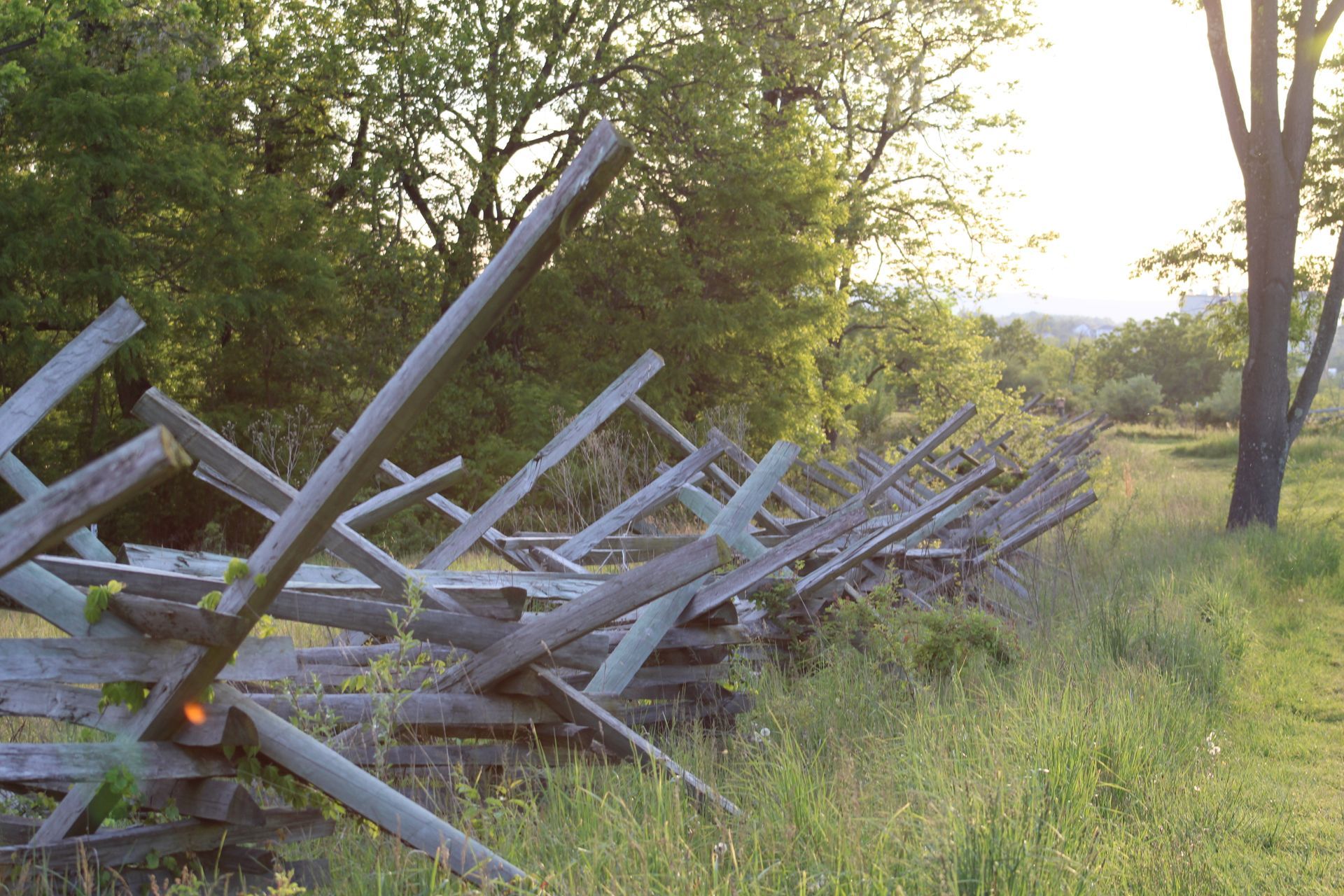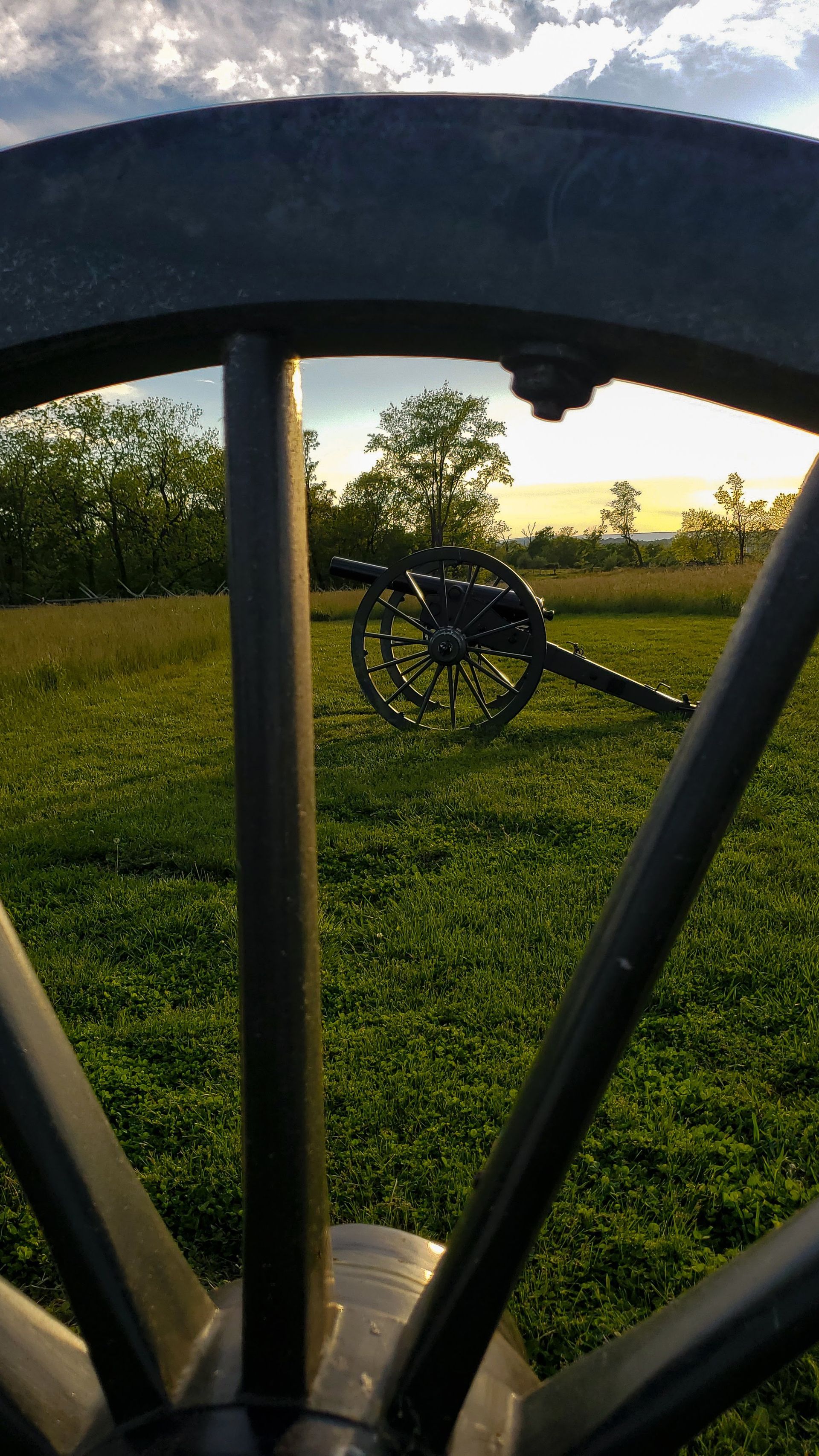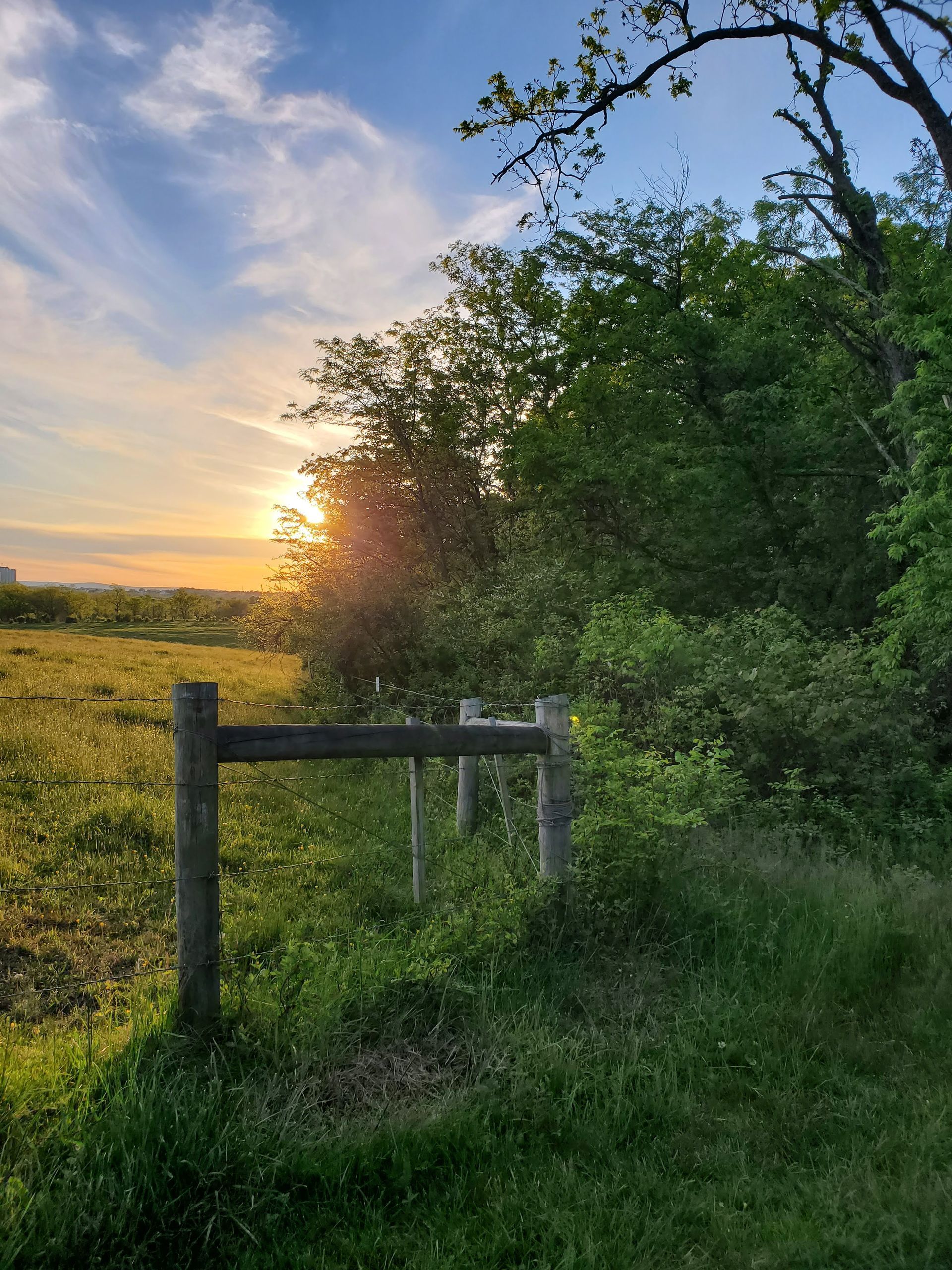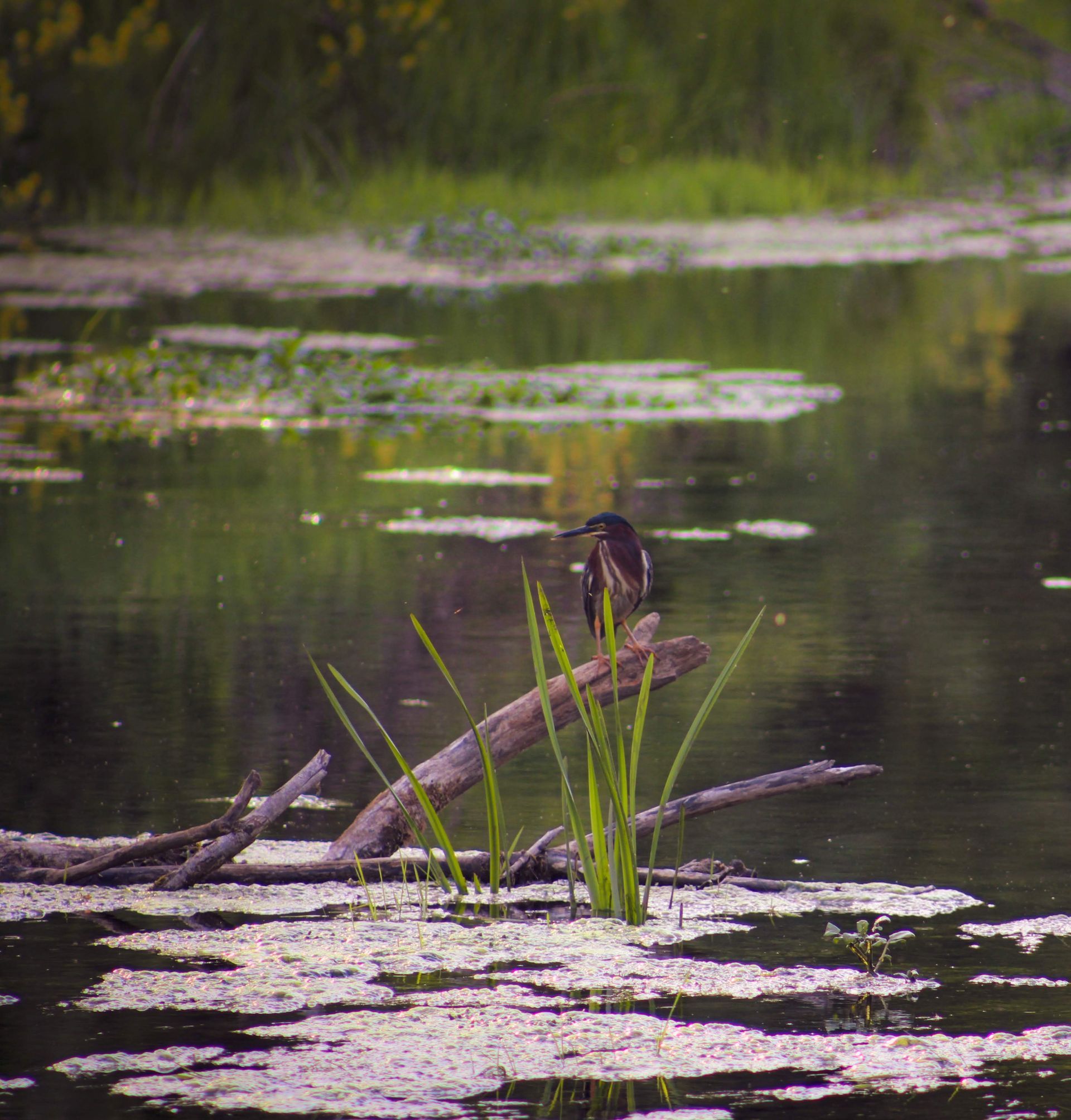Little Rays of Pitch Black






Third Winchester Battlefield Park
The Third Battle of Winchester, also known as the Battle of Opequon Creek, fought on September 19, 1864, was one of the hardest fought battles of the Civil War. Around 9,000 men were killed in a single day. Both future Presidents Rutherford B. Hayes and William McKinley, as well as Col. George S. Patton' (whose grandson would later garner his own battlefield recognition in WW2), fought here.
A sign close to a bench overlooking the creek tells me that Hayes led the charge across Red Bud Run, where his horse got stuck in the mud while trying to cross, forcing Hayes to get down and crawl on hands and knees, reaching the other side alone.
This was the first battle utilizing cavalry, artillery, and infantry all at once, and as I walked the trail up and down the hills, I imagined all the men and horses and cannons that would have been there that day and the absolute chaos and noise that would have reigned. Blood. Sweat. Shouting. Mud. Steel. Cannon fire.
Now it is quiet, except for all the sounds and activity of the wildlife. A sign on the trail describes all the birds you might see. Honeysuckle is everywhere, its sweet smell hanging in the air. Deep onto one of the trails under the shade of all the tree overhang, a rabbit scared me to death jumping out of my way and plowing its little escape through the brush. Three cannons sit silently atop the slight hill in the middle of the battlefield. A huge deer crossed the path in front of me on the battlefield, stopping to stare at me before bounding away across the same field where cannonballs would have been flying left and right 159 years ago.
The first time I drove past this place, I was on my way to somewhere else, it was pitch black, and somehow I still knew it was a battlefield. I could just feel it, which I admit sounds incredibly weird. I am not a hippie-dippy person, but I guess as Michael Scott says, "I'm not superstitious, but I am a little stitious," and I'm not sure I believe that places where so much death and destruction occur in such concentrated amounts are ever cleansed of that entirely, no matter how much time passes.
At any rate, the eerie juxtaposition between this beautiful now-park and its history aside, I encourage you to check it out if you're ever in the area, both for the views and the historical knowledge.